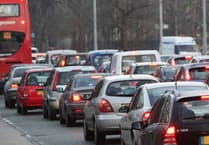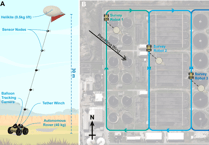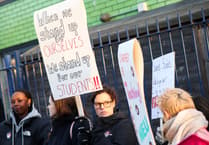Explosions rocked the village of Ripley on February 10, 1969 as a fire destroyed a hardware store in High Street.
“It was just like the Blitz all over again,” said a woman in a nearby pub.
The News & Mail’s report stated that hundreds of people in properties for 75 yards either side of the blaze were evacuated.
The explosions sent shattered roof tiles across the street, windows on the opposite side of the road were cracked by the heat, and a gas cylinder was thrown 150 yards across the village green into trees.
The shop was Richard Green’s hardware store – and the fire began while a tanker was pumping paraffin into the store.
The News & Mail’s report added: “Large-scale evacuation procedures were pursued because of the fear that petrol tanks could explode, the tanks being under the forecourt and under the garden of an adjacent cottage of Mrs and Mrs Charles Shoesmith, who were away on holiday in Majorca.”
Eight fire engines – from Woking, Guildford, Esher and Camberley – attended the fire.
Also in attendance were three ambulances, which stood by in case of any injuries.
The first of the explosions blew down the rear wall of the hardware store.
Onlookers scattered when burning rafters were thrown into the air.
Traffic heading from Guildford towards London was diverted away from the village through Send. This was before the A3 (Ripley) bypass was constructed.
The paraffin tanker’s driver was George Lovett of Aldershot.
Soon after he commenced pumping the liquid into the first-floor storage tank he heard a rushing noise and saw paraffin gushing from the ceiling below.
He ran to his lorry to switch off the pumps – and when he returned he found the store ablaze.
Realising staff were still inside the store, Mr Lovatt ran to the front and raised the alarm.
He told the News & Mail: “The place was a mass of flames. Everyone got out and when I got back to my lorry I saw that the hose, which was still connected to the storage tanks’ inlet, was on fire so I grabbed a knife and hacked through it before driving my lorry to safety.”
Witnesses gave their versions of the disaster.
Rita Avery of Wisteria Cottage, Newark Lane, Ripley, heard the explosions.
Realising the home of her brother Mr Shoesmith was next door but one to the hardware store, she rushed across the road and attempted to remove furniture. But she was restrained from doing so by fire crews and the police.
With tears streaming down her cheeks, she told a reporter: “It was just too terrible.”
Leonnard Lunn, at the Green Lantern Cafe opposite the hardware store, said: “I thought the heat was going to burst the windows.”
At the White Hart pub, manager Bill Mayers “stayed on duty” but saw his wife and family safely into the field at the back of the premises.
Mr Mayers said he had experienced the Blitz in London but he had never seen a place “go so quickly”.
He added that during the height of the fire the heat was so intense that he was unable to hold his hand against the window of his house that was ten yards away.
Mr Mayers added: “It was like being in the war all over again. This house shook with the explosions.”
Amazingly perhaps, local traffic was allowed to pass along High Street at some point while fire crews were on the scene.
The report noted that vehicles “negotiated the wooden ramps protecting fire hoses”.
But the undercarriage of one car fractured a hosepipe and “sent a huge fountain into the street”.
Send and Ripley History Society’s journal volume seven, number 219 of July and August 2011 contains a story by John Slaford about the Green and Nokes families and their business history including the hardware store.
Charlie Nokes sold the family business to Dennis Allen in the mid-1960s.
Mr Nokes continued to live next door to the hardware store until the 1969 fire, which destroyed not only the shop but resulted in the adjoining houses being demolished.
Thanks to Peeps researcher Mark Coxhead who discovered the report of the blaze on microfilm copies of the News & Mail at the Surrey History Centre in Woking.




